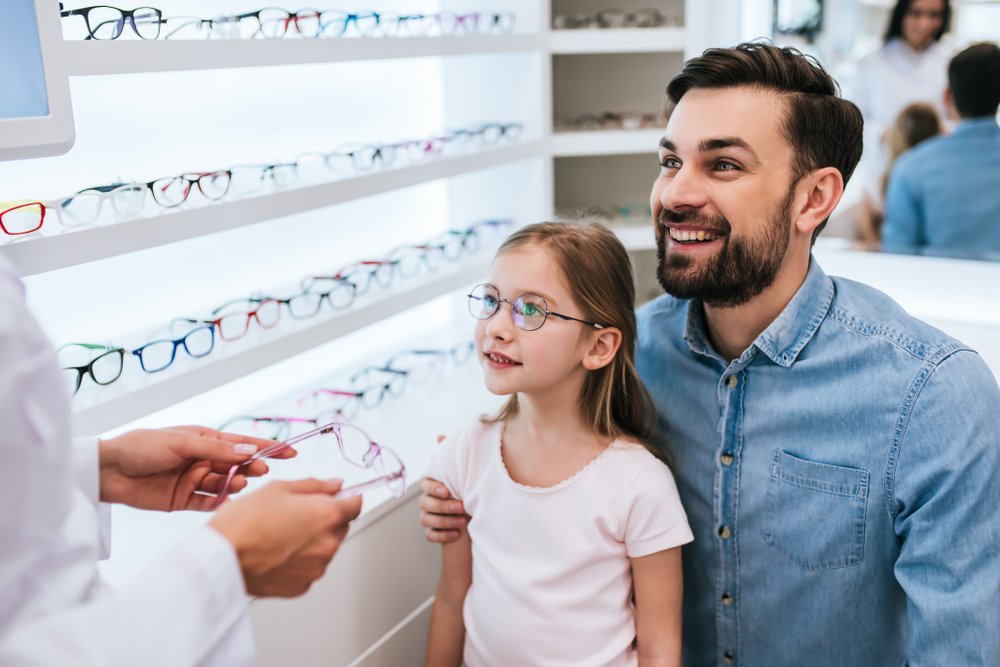 As a parent, keeping an eye on how your child is doing is always a priority. From their physical health to their progress in school, every detail matters. However, there is one area that tends to be overlooked—their vision.
As a parent, keeping an eye on how your child is doing is always a priority. From their physical health to their progress in school, every detail matters. However, there is one area that tends to be overlooked—their vision.
A child's vision is crucial for their development, as it can affect their ability to learn, participate in physical activities, and even shape how they interact with others. Unfortunately, it can be difficult for a parent to identify when their child's eye health is in need of professional attention. Left unchecked, deteriorating vision can have serious consequences for a child's development and well-being.
August is Children's Eye Health and Safety Month, and to help parents keep an eye on their child's vision, here are 7 signs that they may need glasses:
1. Squinting or Closing One Eye
Squinting is one of the most common signs that your child might need glasses. It's a natural response to try and make blurred vision appear more clearly. When a child squints, they're adjusting the shape of their eyes to help light focus onto the retina more effectively. For just a moment, this action can help enhance their focus and clarity, but it isn’t a long-term solution to a potential vision problem.
Additionally, a child squinting or closing one eye could indicate a condition known as amblyopia, also known as lazy eye. Amblyopia occurs when vision in one eye becomes weaker than the other, and if left untreated, can lead to permanent vision loss in the weaker eye. Other symptoms of amblyopia include poor depth perception.
2. Frequent Headaches
If your child is having trouble seeing well, they may unknowingly be forcing their eyes to work harder than usual to see clearly. This can lead to eye strain. A primary symptom of eye strain can be discomfort or pain behind the eyes; this is often why patients complain of a headache. If your child complains of headaches while reading, doing homework, or after spending time on digital devices, it might indicate that they are straining their eyes and potentially need glasses.
It is worth noting that a child with perfect vision may still experience eye strain or headaches from staring at digital devices or being out in bright sunlight for too long. If this is the case, you can reduce the strain by making sure your child wears sunglasses whenever they're outdoors and limiting their screen time.
3. Sitting Too Close to Screens
While there is no evidence that sitting too close to the TV causes damage to a child's eyes, it can be a sign that they're already struggling with their vision and need to wear glasses. If your child constantly sits close to the television or brings things very close to their eyes, it could be a sign that they are myopic, meaning they have difficulty seeing objects at a distance.
4. Difficulty Reading
Difficulty with reading is a common sign of vision problems in school-age children. If your child is having trouble reading, it could be due to conditions like astigmatism or hyperopia, which can make it difficult for them to focus on the words on a page.
Another possible issue is an eye coordination problem. For example, convergence insufficiency is a condition where the eyes don't work together correctly when focusing on a nearby object. This can make reading uncomfortable and cause the child to lose their place while reading.
Though other issues like dyslexia can also make it difficult for a child to read, if they've already received tutoring or another intervention and are still struggling, a vision screening or eye exam should be the next step.
5. Tilting Head or Unusual Eye Movements
Moving the head or eyes in an unusual way can also be a sign of vision problems. For example, if your child is constantly tilting their head to the side or turning their eyes inwards, it could be a sign of amblyopia or strabismus, two common vision problems in young children.
Strabismus, also called crossed eyes, is a condition where the eyes are misaligned. Children with strabismus may tilt their heads to align their eyes better and reduce double vision. For amblyopia, the child may be trying to use their better-seeing eye more predominantly.
6. Rubbing Eyes Frequently
Eye rubbing is often a response to eye discomfort, which can stem from a number of problems, including dry eyes, allergies, and vision issues like myopia and hyperopia. In other words, if your child is rubbing their eyes frequently, it could be a sign that they need to wear glasses or have another issue with their eye health that needs to be addressed.
7. Poor Performance in School
If you notice any of these signs in your child, it's time to schedule a medical eye exam. In fact, even if your child doesn't show any of these signs, it's still important to have their eyes checked regularly. Keeping a child's eyes healthy and protected is essential for healthy development, so be sure to get them into Conestoga Eye at least once a year.
During your child's eye exam, one of our expert eye doctors will examine their eyes, check their vision, decide if your child needs glasses, and discuss any other eye health concerns you may have. After, our optical team will be there to help you and your child choose the perfect pair of glasses.
Whatever your choice, Conestoga Eye will be here to help keep your child's eyes healthy and ensure their vision is as clear as possible for years to come.
The experts at Conestoga Eye are ready to help your family improve their vision and quality of life. Schedule an appointment online with us today to start your journey toward better vision.
